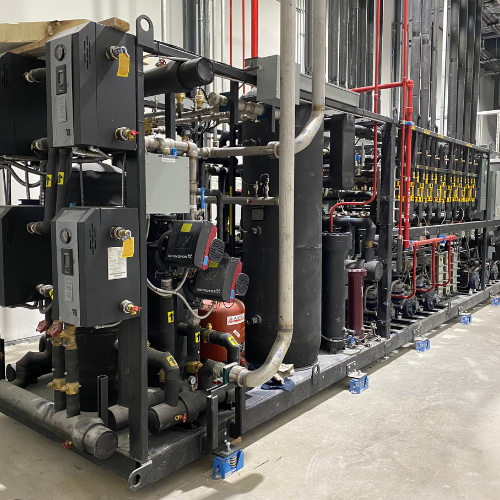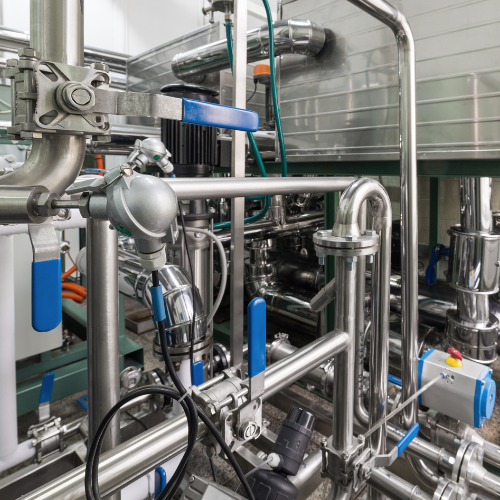The HVAC industry is facing a significant transition with the phaseout of R410A refrigerant. As a widely used refrigerant in residential and commercial air conditioning systems, the shift away from R410A will impact manufacturers, service providers, and consumers alike. Here’s what you need to know about this important change.
What is R410A?
R410A is a hydrofluorocarbon (HFC) refrigerant commonly used in air conditioning systems. It replaced the older R22 refrigerant, which was phased out due to its ozone-depleting properties. R410A became popular because it is more energy-efficient and has no ozone depletion potential.
Why is R410A Being Phased Out?
The primary reason for the phaseout of R410A is its high Global Warming Potential (GWP). GWP measures how much heat a greenhouse gas traps in the atmosphere over a specific time period. R410A has a GWP of 2,088, which is significantly higher than the newer alternatives being considered. Reducing the use of high-GWP refrigerants is part of global efforts to mitigate climate change.
The Timeline for the Phaseout
The phaseout of R410A is part of a broader international agreement called the Kigali Amendment to the Montreal Protocol. This amendment aims to reduce the production and consumption of HFCs, including R410A, over the next few decades. In the United States, the Environmental Protection Agency (EPA) has set forth regulations to limit the use of R410A in new equipment starting in 2024, with further reductions planned over the next decade.
Impact on the HVAC Industry
1. Equipment Transition: Manufacturers are already developing and introducing new HVAC systems that use lower-GWP refrigerants such as R32, R454B, and R466A. These alternatives offer similar performance but with a reduced environmental impact.
2. Service and Maintenance: Technicians will need to be trained to handle the new refrigerants, which may have different operating pressures and safety considerations compared to R410A. Proper recovery and recycling of R410A from existing systems will also be essential.
3. Cost Implications: The cost of new equipment and refrigerants may be higher initially. However, as the market adapts and production scales up, prices are expected to stabilize. Additionally, newer systems often offer improved energy efficiency, which can lead to long-term savings on energy bills.
What Consumers Need to Know
For consumers, the phaseout of R410A means that when it’s time to replace an old air conditioning system, it will likely be with a unit that uses a more environmentally friendly refrigerant. Here are some tips for homeowners and businesses:
- Plan Ahead: If your current system uses R410A and is nearing the end of its lifespan, start researching replacement options now. Consider the total cost of ownership, including potential energy savings with newer systems.
- Hire Certified Technicians: Ensure that any technician servicing your HVAC system is certified and knowledgeable about handling both R410A and the new refrigerants.
- Stay Informed: Keep up to date with industry news and regulations regarding refrigerants to make informed decisions about your HVAC systems.
The phaseout of R410A represents a significant shift in the HVAC industry, driven by the need to address climate change. By understanding the reasons behind the phaseout and preparing for the transition, both industry professionals and consumers can navigate this change effectively and contribute to a more sustainable future.
As the HVAC market in Ontario and beyond continues to evolve, staying informed and proactive will be key to managing this important transition smoothly.

Roberto Stillisano, Commercial West Team Lead
Roberto Stillisano is a seasoned professional in the HVAC industry, currently serving as the Team Lead for Commercial HVAC. With nearly three decades of experience, Roberto has been instrumental in leading projects and teams to deliver high-quality HVAC solutions. His expertise spans across various aspects of commercial HVAC systems, making him a valuable asset to his customers. Roberto is known for his leadership skills, technical knowledge, and commitment to excellence in the field.
Related Posts

DesLaurier Cold Storage

Comparison of Key Refrigeration System Components: Making the Right Choice for Your Operation
.png?sfvrsn=26cbdc22_3)
Ammonia Heat Pumps Achieve 185°F, Ditch the Boiler for Food & Beverage Production
|
|



